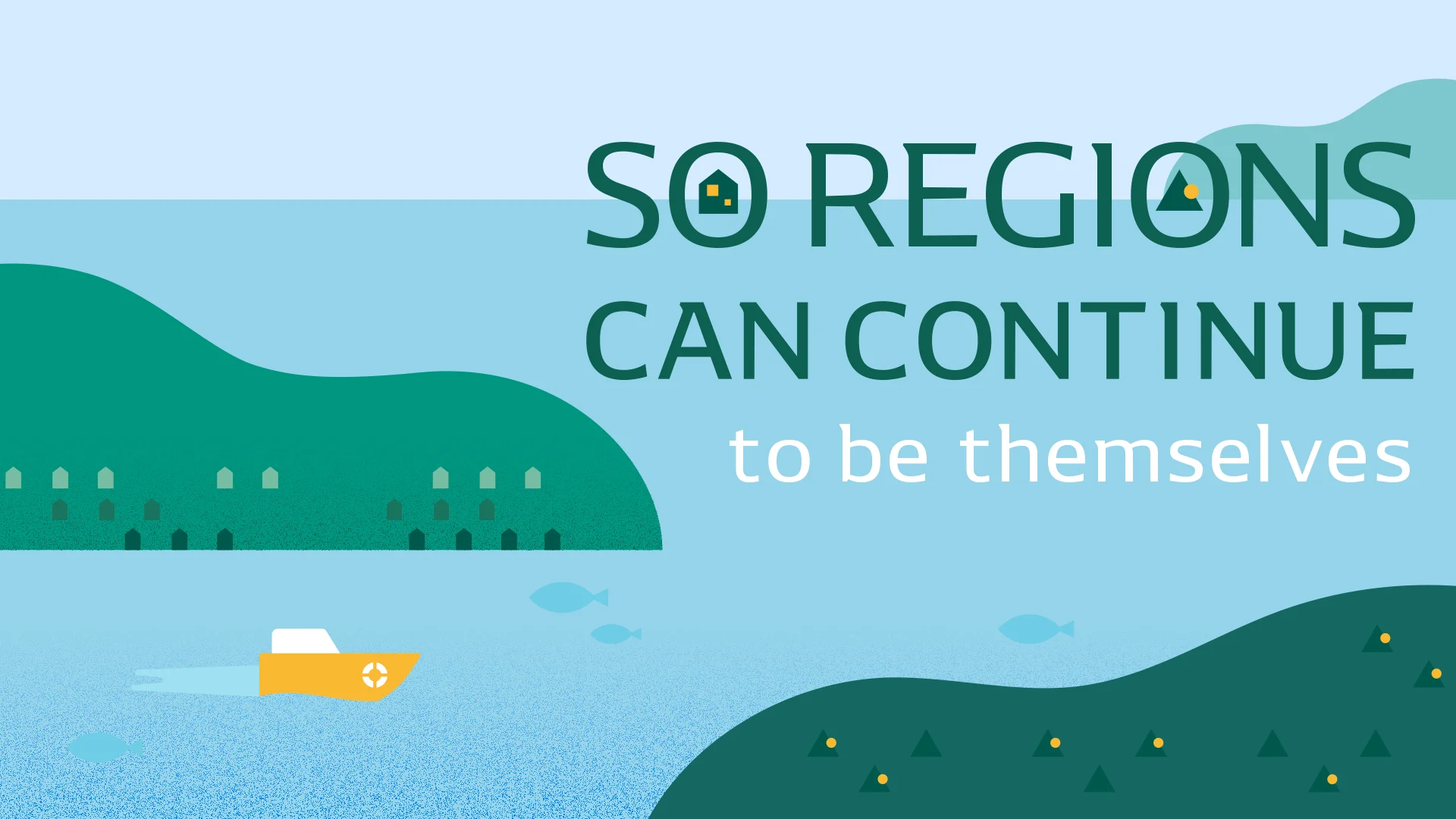Did you find this article helpful for what you want to achieve, learn, or to expand your possibilities? Share your feelings with our editorial team.
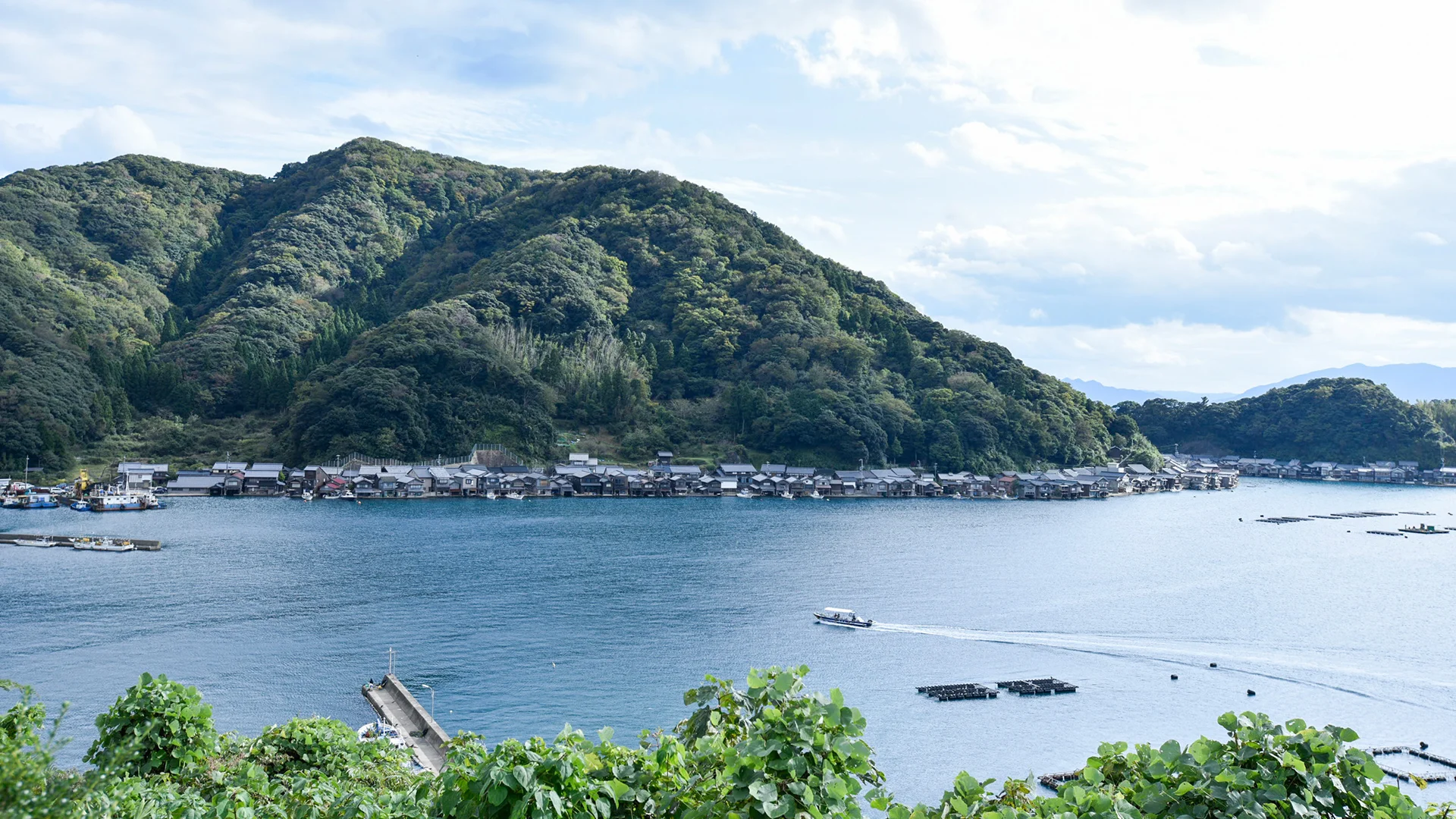

Feb 01, 2021
VISION & IDEACherishing local culture to enjoy the unique resulting lifestyles
Solving local problems through the DENSO Lifevision platform
No two towns in this world are alike. Each has its own unique characteristics and people, and offers its own unique experiences and lives. By enabling greater freedom of movement of people, things and information, it’s possible to reduce uncertainty, discomfort and inconvenience in daily life. Moreover, it’s possible to deliver their unique types of happiness and enjoyment by interweaving their own culture, history and interpersonal exchange in each place. Having those thoughts, DENSO is developing the “Lifevision” platform in order to solve local problems in every communities.
Contents of this article
Rethinking the idea of “place”
People today always seem to be busy and in a rush. They are often buried in the sea of people in packed trains, or drowned in a flood of information by using their smartphones too much. Amid the rush, increasing numbers of people are turning toward more relaxed lifestyles in less populated regions, or splitting their time between the country and city, in order to have more personal time and enjoy life more fully.
These patterns have become even more widespread during COVID-19. People have come to realize, through shared experiences, that they can do their work without going in to the office. This has made it common to work without being tied to a specific location.
The idea that city life is enriching and more convenient is starting to go out of fashion. COVID-19 has caused many people to discover that having more personal space and time to oneself—rather than focusing merely on the convenience of physical things—can enrich their lives. In short, they have found that living outside of the city may suit their lives better as they search for comfortable spaces and new ways to use their time in line with their personal needs. Technology has responded rapidly to satisfy these new demands.
At DENSO, we have been developing technologies that can free people from the constraints of traditional “places.”
A platform facilitating freer movement of all things
We believe that it’s important to steadily eliminate restrictions on the movement of people, things and information in order to free people from the traditional restriction of “place.” To this end, technology tests have already been taking place all around the world.
Consider the movement of people: the gradual dissemination of mobility services using low-speed, automated-driving vehicles enables the elderly without their driver’s licenses to get around town more freely. Such services also enable tourists to get to know a town’s culture and people better during their visits.
Regarding the movement of things, major changes are already underway. Drones are used as an easily deployable means of transporting goods to small islands that lack the transport infrastructure necessary for traditional delivery services. Mobile refrigerators can make it possible to transport fresh foods, vaccines and other cargo that are extremely sensitive to temperature fluctuations, providing a way to move these goods without relying on infrastructure equipment.
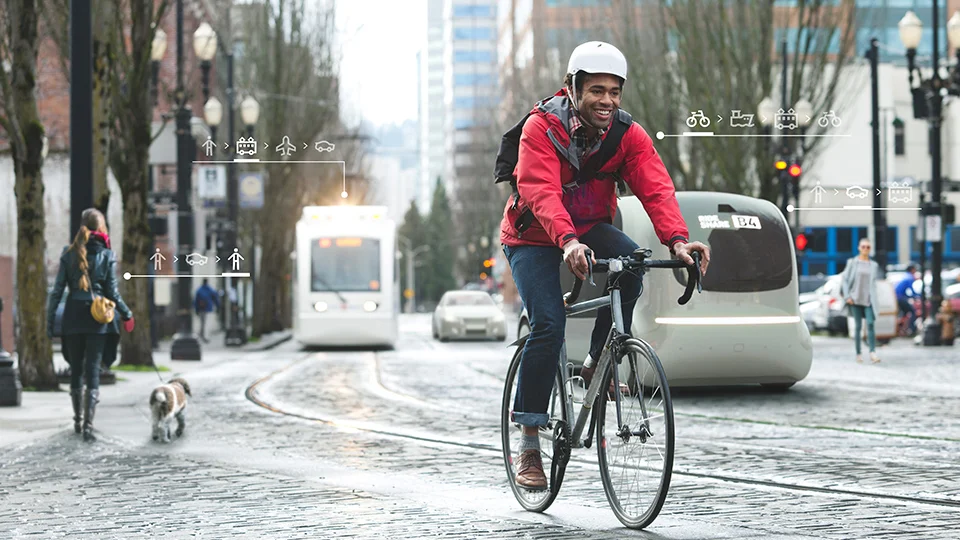
As for the movement of information, the pandemic has restricted people’s freedom of movement, but this has gradually revealed what kinds of things will be in demand in the future.
People would like to complete the administrative procedures from home, they would like their school classes to work out well remotely even when schools are shut down, and they would like to use telemedicine for their bedridden grandmothers.
If a single platform could handle all of these challenges for the movement of people, things and information, then everybody could enjoy more productive, comfortable lives no matter where they lived. With this vision of a better future, DENSO is developing the Lifevision, the regional communication system.
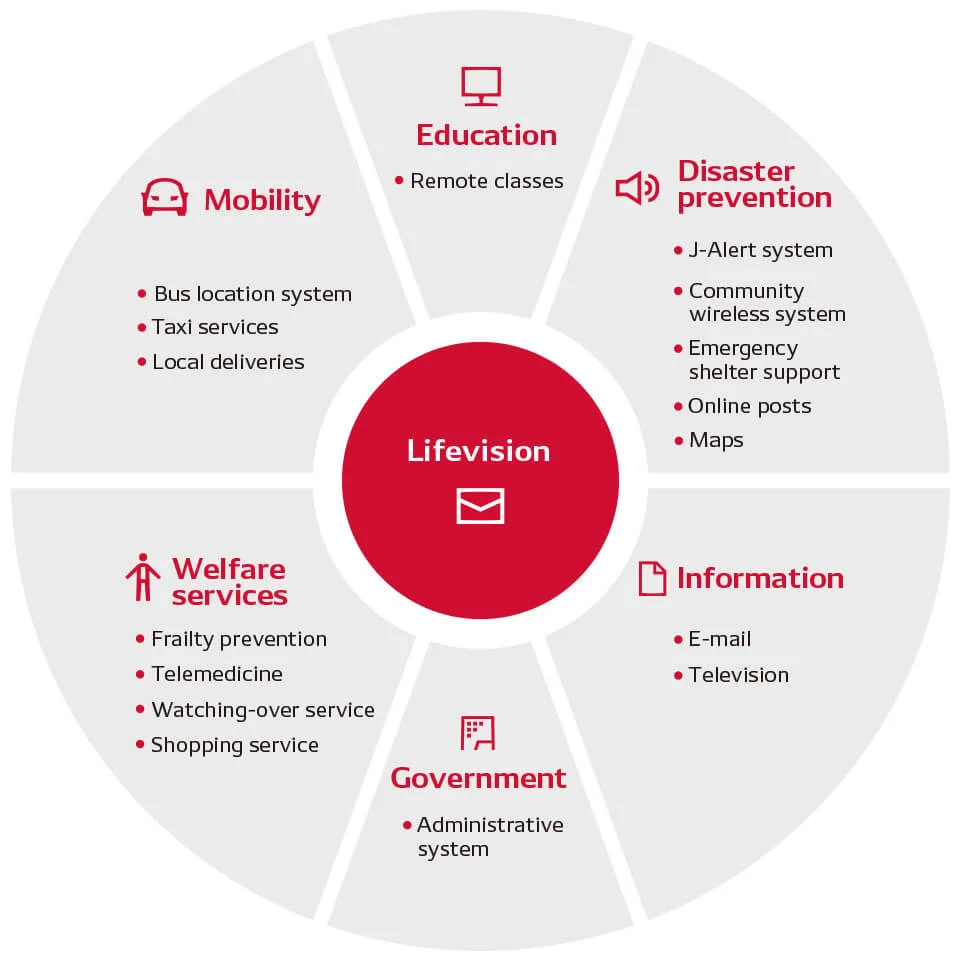
Information platform that will leave no one behind
The Lifevision is primarily an information service application that connects residents with their local government. The government can send important announcements and notifications about citizens’ lives through a single communication channel, which residents can receive and check easily with the application. This flexible app is unique in that, in addition to basic features, new functions and features can be added in accordance with regional needs, such as watching-over services, on-demand transport services, and others.
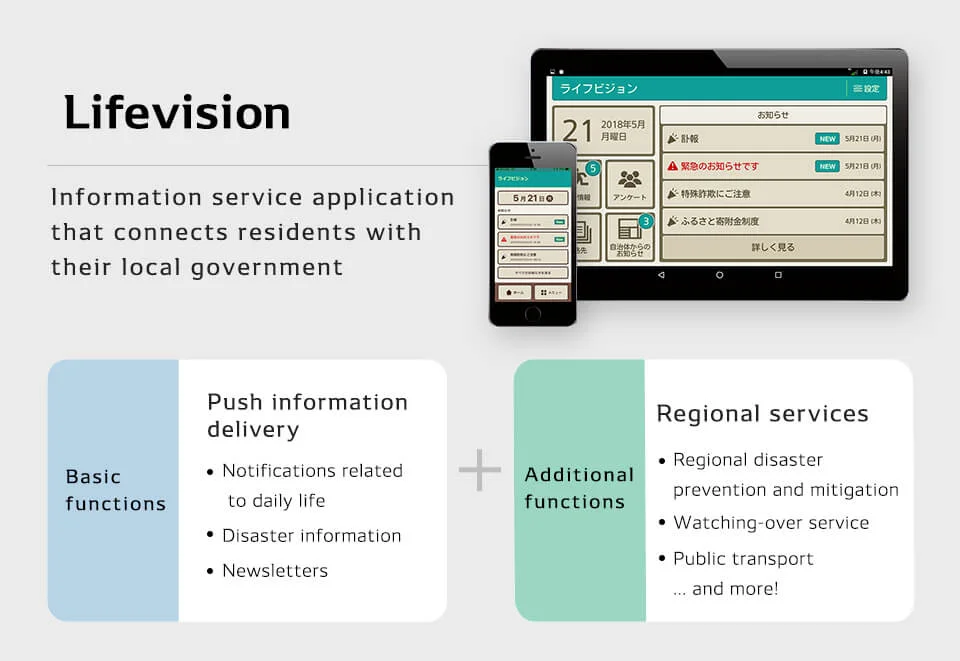
But no matter how revolutionary a technology or service may be, it has no point if people in the community don’t use it in their daily life. But it’s easier said than done. How can we design it to be user-friendly for a wide array of people regardless of age or ability, without leaving a single potential user behind?
The first factor to consider is that a smartphone should not be a prerequisite. We should design the platform even people who don’t have smartphones or other specific devices, or who aren’t accustomed to using such devices, can still use the Lifevision with ease. That’s why we thought that we should design the software to work with multiple types of hardware.
For elderly users in particular, who may not have much experience with modern-day communication technology, we decided it would be best to distribute tablets with the app pre-installed. The Lifevision tablet comes with a read-aloud function, which provides audio read-outs of important notifications. Even if the users do not actively use the devices, they can receive disaster-related notifications and other notices that require their attention if the devices are just at home. By installing these tablets in all residents’ homes, it will become possible to disseminate information to them more cheaply and reliably than before.
The most important thing is the Lifevision system must be highly customizable, enabling various features and functions to be added in response to regional needs. The development team knew they had to prioritize ease of connectivity between Lifevision and outside providers’ services in order to achieve this feature.
In addition to making the system’s basic functions simple and limiting them to the essential ones, DENSO had to ensure high extensibility to enable easy coordination with systems used by outside services. Each region and community has its own unique challenges, and DENSO does not have all of the technology, skills and knowledge to tackle every one of them. Therefore, the development team designed the system to be as accessible as possible for collaboration with various service providers in each region.
The goal of the Lifevision is to build a reliable, long-lasting information communication infrastructure that can help many people in personalized ways. This new system has the potential to spur many actions that brighten the futures of communities all around Japan.
Tailoring Lifevision to local needs through communication with residents
As of November 2021, the Lifevision is used by 48 municipalities in Japan. Looking back on its various introduction examples, project leader Koichi Sugiyama happily comments, “Many local governments have been making good use of this platform, even better than we had imagined possible while designing it, in fact.”
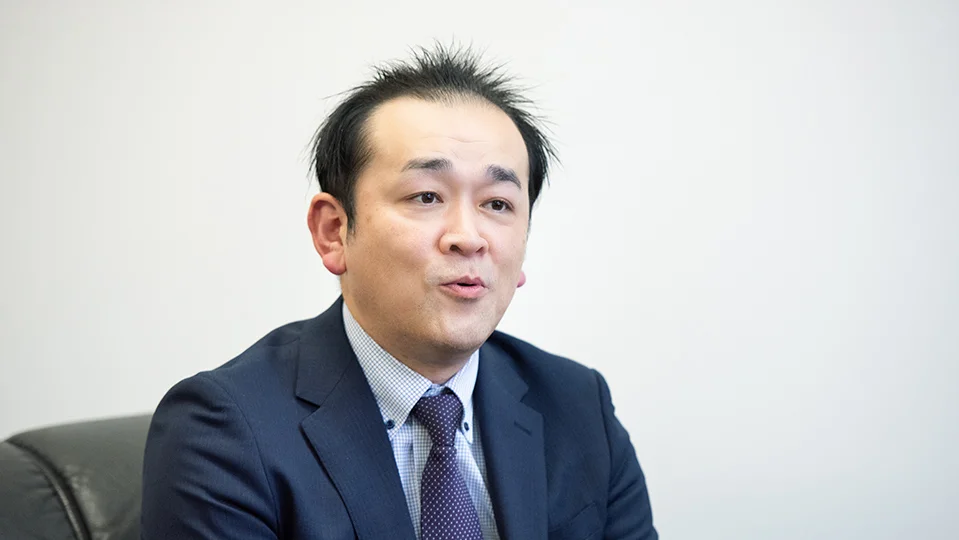
Sugiyama says,
“Lifevision has several interactive communication functions that make it possible to send disaster-preparedness information from local residents to their governments. They have used it regularly to upload photos of road damage and other such problems they have encountered. Even a small pothole can be photographed and easily sent together with GPS information to the government.”“When thinking about disaster-prevention information, people tend to focus on major earthquakes, typhoons and other large-scale incidents. However, our experience with Lifevision has shown that local communities often require information on smaller matters that affect their everyday lives, such as areas that have been flooded by heavy rain, the location of a bear sighting in town, or children, elderly people and dogs that get lost.
I’m very happy that the Lifevision make it possible for local governments and people to share small but serious daily problems and to quickly take actions necessary to solve the problems.”
The Lifevision is helpful not only to prevent disasters but also to provide community-based living information. Lifevision project members frequently visit communities where the platform has been introduced in order to talk with the locals and to adapt its usage to local requirements.
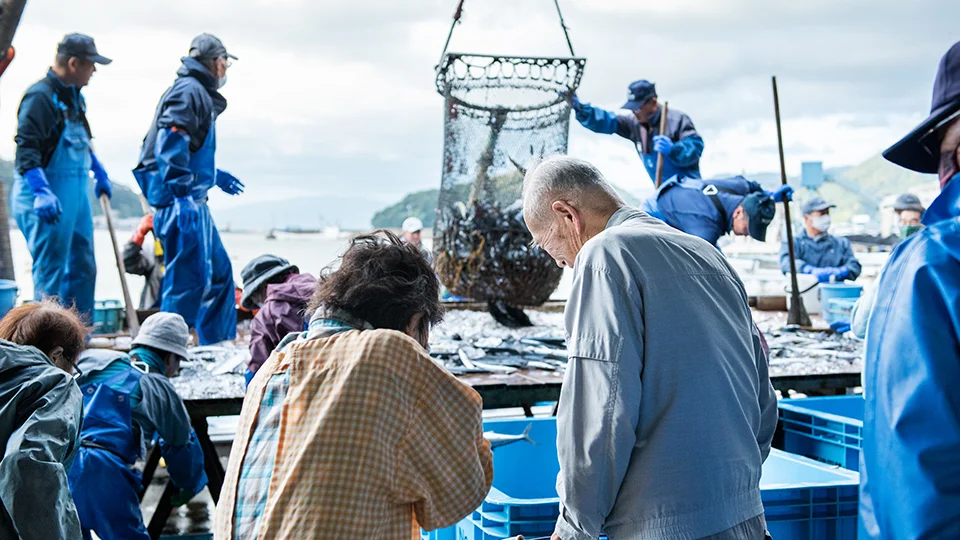
Sugiyama continues,
“In the small port town that has no supermarket, the locals can buy fresh fish at the fishing port directly. The Lifevision is regularly used to convey information about the type of fish and the amount available. It varies among the communities what kinds of information and when it is necessary, and it is why we work closely with local governments and proactively communicate with the locals. Rather than holding formal meetings with them, we try to get involved in the daily small talks in each community, which enables us to understand their real lives that we cannot see more intimately than just watching from the outside. Such efforts give us the ideas of information necessary for each community, and then utilize them for function and feature updates for the Lifevision.”
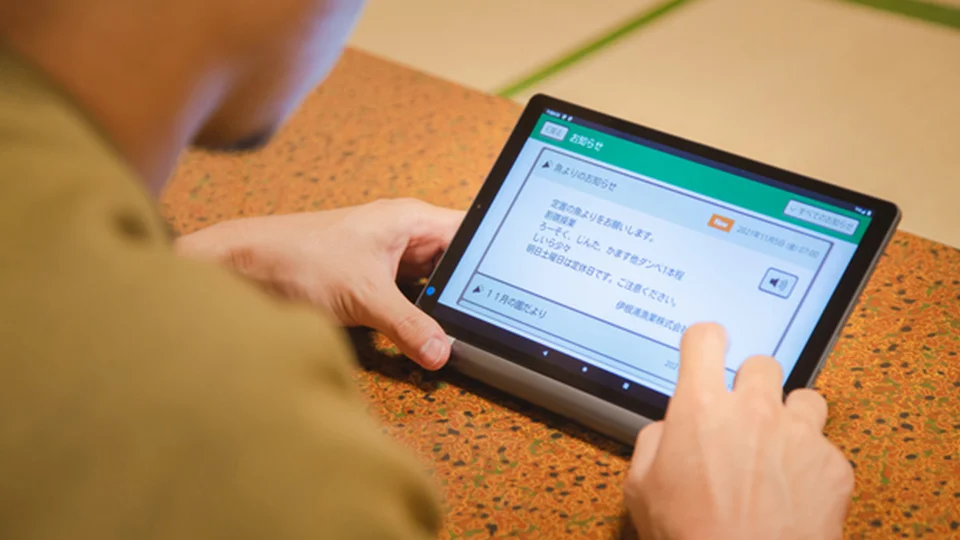
By listening closely to the needs of people living in each community, DENSO can tailor the Lifevision to them individually while evolving the platform. Using this approach, we have already deployed a variety of features in different communities, particularly for elderly users living alone, including watching-over service, shopping support services, provision of activity and event information to get them out of the house, and “community bus” public transit features.
A strong focus on local perspectives and needs
Since September 2021, in order to learn more the perspectives of people living in local communities where Lifevision is used, DENSO has been relocating project members to live in those communities. Risa Takahashi of one of the members has lived in Ine town, Kyoto Prefecture, where the Lifevision is utilized as the name of “Ine-ban”, and has worked as a member of the Sightseeing Planning Division of the town office while finding ways to improve Lifevision services.
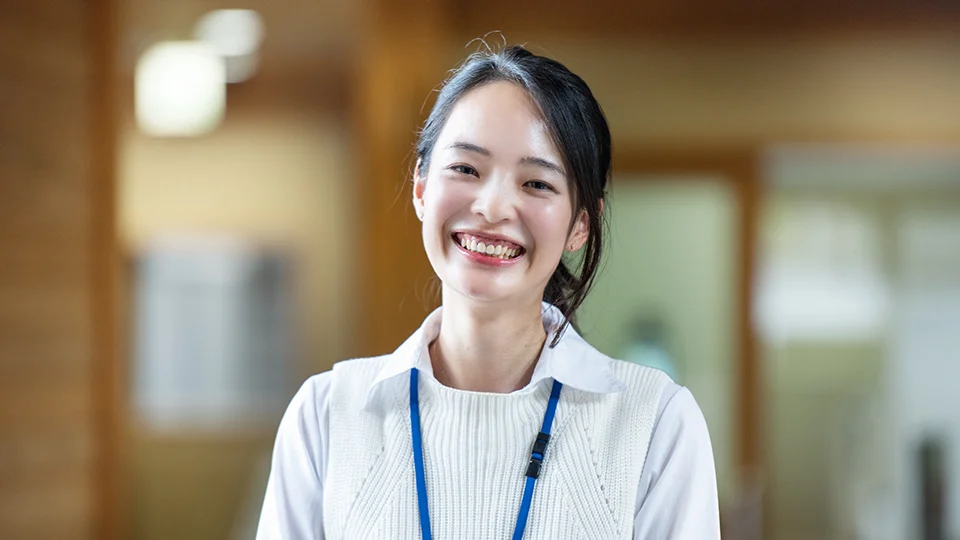
Takahashi says,
“My job is to develop a better understanding of the work of local public servants and the lifestyles of locals here in Ine-cho. By working with the people who use the Lifevision, I would like to come up with a lot of new ideas about how to tailor the system to actual users.”“When I introduce myself to the locals and say that I’m from the company that made the Ine-ban [Lifevision] platform, they tend to respond, “Ahh, you mean that tablet, right? I use it all the time to check new information. We really like it!” Our services seem to be truly useful in people’s daily lives. I would like to do my best to make the daily lives of the locals in Ine-cho more enjoyable and comfortable by understanding what they really need with their perspective.”
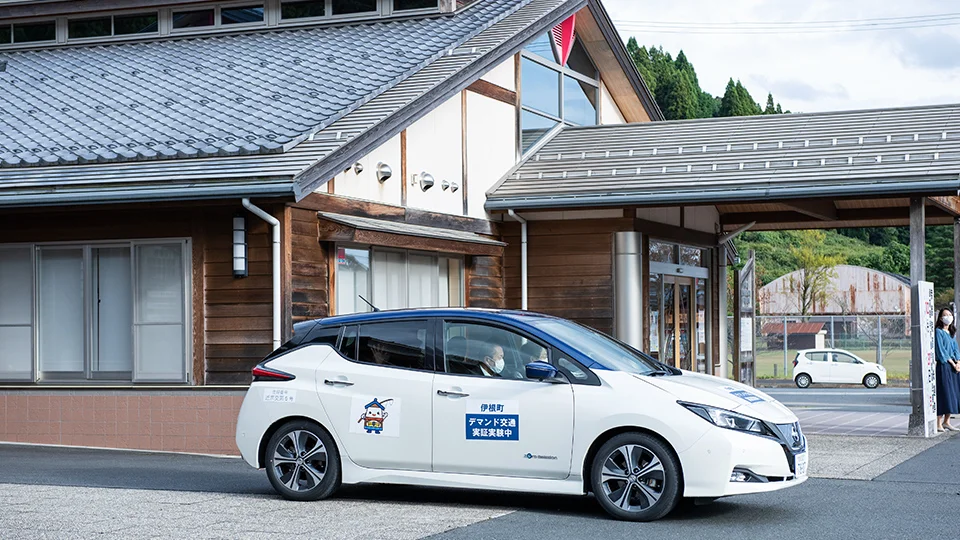
New services are continually being deployed in Ine-cho—one example is an on-demand transport service for reserving taxis via the Lifevision. Coordinating with such mobility services is DENSO’s forte, and we will use this strength to provide more useful community support measures going forward.
Takahashi explains,
“”Public transportation blank areas" are appearing more frequently as operators of buses, taxis and other means of transport withdraw from the populated areas. However, collaborative efforts together with operators of on-demand transport services in such areas can result in even more convenient transit systems than before. It requires only a few members to operate, and enables users to move door-to-door, directly from their home to the destination. This convenience has made such services highly praised by the local governments that are using them.”
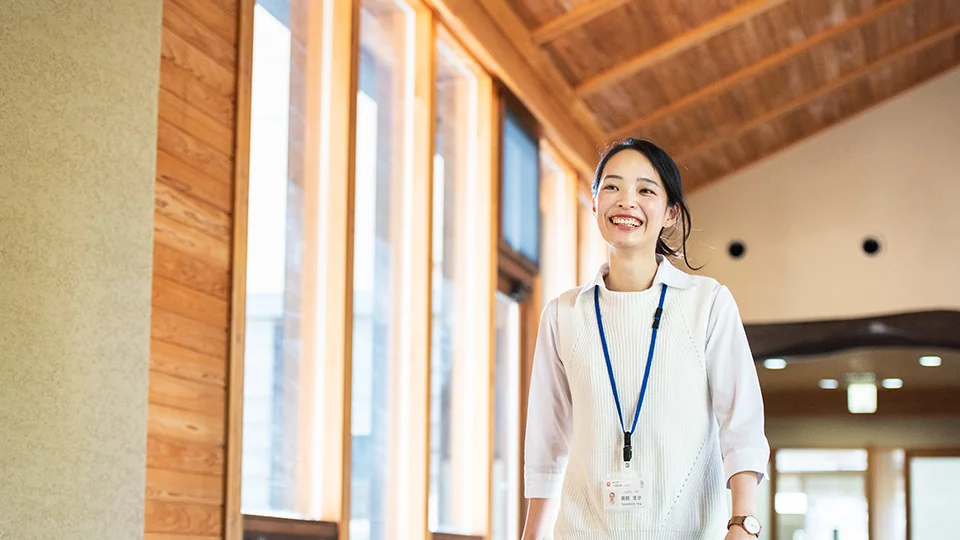
“As practical implementation of automated driving, autonomous-travel robots and other such technologies becomes more commonplace, we can pursue a wider range of collaborative services. When you require a small shopping trip or delivery, for example, you could use the Lifevision to ask a robot to run that errand for you. I believe that such services will become a reality in the near future.”
“DENSO has many years of experience with complex mobility systems, and that is why we are skilled at using IoT technologies in a variety of practical ways to move physical goods and things. I believe we can make full use of these technologies and skills to help solve the problems faced by local governments.”
Fostering new norms through calm technologies
In our manufacturing and development, DENSO always strives to create things that become the new norm for as many people as possible, rather than focusing on things that are specially designed for only a small number of users. However, it takes time for revolutionary technologies to be accepted by the general public. That’s why, in the field of mobility, we are spending years to transform each useful technology into something familiar and commonplace for people everywhere.
These types of technologies, which are meant to blend seamlessly into users’ lives, are known as “calm technologies,” and they represent one of our key focuses. The Lifevision platform is one example of DENSO’s calm technologies, and one which we hope to disseminate widely throughout society.
By designing technologies based on demands expressed by citizens, we can better integrate them into people’s lives. We respect people’s current lifestyles and set the convenient of our various technologies into people’s lifestyles and their everyday lives. It takes a lot of time and hard work to evolve and improve established norms, but we enjoy the process and are good at it.
By offering solutions that facilitate freer movement of people, things and information, we hope to eliminate inconveniences in people’s lives everywhere. By overcoming the limitations of “place,” we will enable people everywhere to live healthy and long lives wherever they choose. We will update the norms of daily life in every towns and contribute to people’s well-being by the Lifevision project.
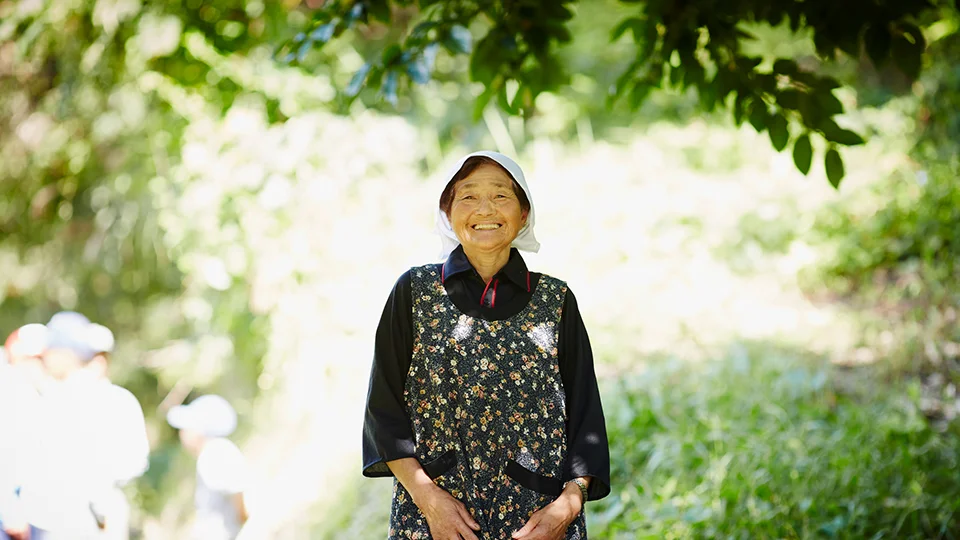
COMMENT
Changing your "Cant's" into "Cans"
Where Knowledge and People Gather.

